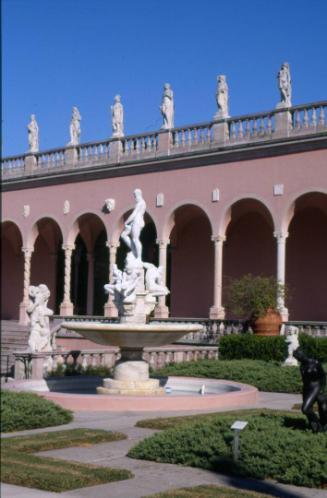The Rape of the Sabines
Artistafter
Jean de Boulogne (Giambologna)
(Flemish, 1529 – 1608)
Dateearly 20th century
CultureItalian
MediumStone
ClassificationSculpture
Provenancewith John Ringling; bequest of John Ringling to The John and Mable Ringling Museum of Art, 1936
Credit LineBequest of John Ringling, 1936
Object numberSN5463
The defining work of Renaissance-sculptor Giambologna’s career, 'The Rape of the Sabines' introduced the striking compositional innovation of multiple-viewpoints, realized with three twisting figures facing all different directions. A break with the predominant mannerist tendencies in Florentine art and largely indebted to the recently unearthed ancient sculpture at Rome (particularly the 'Laocoön'), Giambologna’s sculpture group synthesized Michelangelo’s vision for a free-standing statue, unrealized in his own lifetime, which called for two or three figures arranged in an “S”-like formation. The story comes from ancient Roman legend: the newly established Romans sought to bolster their population, and, lacking a large community of women, they abducted the wives and daughters from a neighboring tribe, the Sabines.
On View
On viewLocation
- Museum of Art, Courtyard












